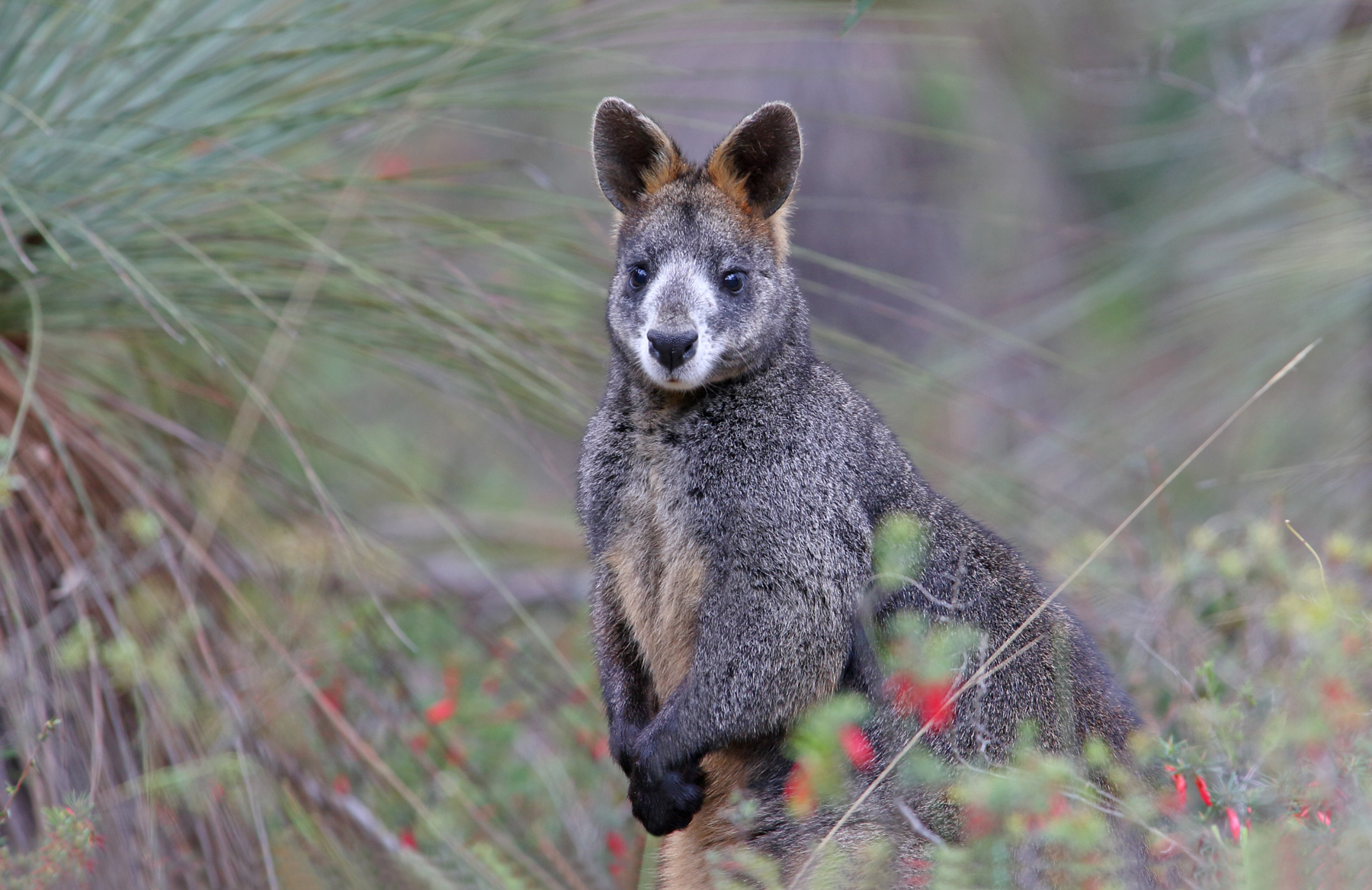By Ian Davidson and Chris Tzaros – Wangaratta Landcare & Sustainability
In this week’s Living Lightly we are featuring a marsupial, the Swamp Wallaby. They are solitary, nocturnal animals that occasionally gather at a common food source with other unrelated animals without showing signs of territorial defense. Like the larger Eastern Grey Kangaroo, also found locally, they hop bipedally on their hindfeet, but unlike kangaroos they hold their heads close to the ground. This enables them to bound up steep banks and through relatively dense vegetation.
The Swamp Wallaby lives throughout Eastern Australia in forests and woodlands where there is suitable habitat including thick undergrowth. Locally they can be found in gullies and valleys in dry woodlands and larger patches of forest on our waterways. The latter is used also for animals to travel into new territories.
This small, stocky wallaby has dark brown fur, often with lighter rusty patches on the belly, chest and base of the ears. Both sexes look similar with males on average a bit larger and heavier. Swamp Wallabies often develop a white muzzle as they age.
Swamp Wallabies are strictly herbivorous. Their diet consists of soft plants such as buds, ferns, leaves, shrubs, and grasses. They have been known to eat bark, shoots from needle-leaf trees, and plants that can be poisonous to domesticated animals. Wallabies are browsers and use their reduced forelimbs to manipulate their food. They are often implicated in eating seedlings of various trees and shrubs when small, meaning that these plants probably need tree-guards until established.
Like many marsupials, female Swamp Wallabies can suckle two joeys of different ages. The pouch life of each joey is eight to nine months, although they may continue to suckle until 15 months of age. After this period the joeys must leave and establish their own territory.
Locally the Swamp Wallaby is literally the animal that goes thump in the night, although it does it in the day as well, when disturbed. The combination of their stocky build and their low to the ground gait means that they appear to crash and thump through the undergrowth.

